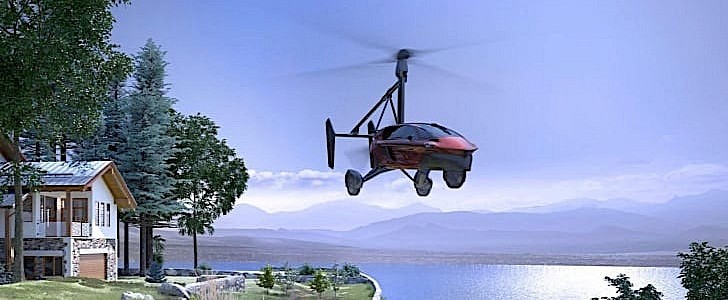To be honest, I personally am kind of tired of hearing about flying cars. They were a nice concept, back in the day when they were fresh out of someone’s brain, but they never came to pass. And soon enough, the whole idea of a vehicle that can be driven on the road and then flown to whatever destination will probably be completely forgotten, given how the world is getting ready to embrace VTOLs.
But there is one Dutch company out there, in the business of (trying) to make a flying car, that just won’t give up. Pal-V is how it’s called, and Liberty is how they plan on playing the game.
Liberty is a car-gyrocopter of sorts, powered by a dual-engine that takes it to speeds of 160 kph (99 mph) on the ground, and 140 kph in the air (87 mph, economic cruise speed).
Because it’s a dual vehicle, it will require both a driver’s license and a flying license, with the latter readily available to those willing to take 35 hours of pilot training. The machine also costs 499,000 ($578,000 at today’s exchange rates), so not exactly a bargain.
With all that’s going on in the industry, and the details mentioned above, you’d have thought Pal-V had given up by now. After all, the first flight of the thing took place almost a decade ago, and the finished product was shown in full almost four years back. Not much happened since, save for a global health crisis and an announcement made earlier this year that the Liberty completed the full certification basis with the European Union Aviation Safety Agency (EASA).
Now, almost ten months after that moment, we get word Pal-V partnered with Airtificial Aerospace & Defense for serial manufacturing of fuel tanks, body parts, propeller- and rotor blades. They will be made of composite materials, a choice meant to bring the weight of the machine down to 664 kg (1,464 pounds).
Pal-V says the deal brings production of the Liberty closer to reality, but fails to say when that will happen.
Liberty is a car-gyrocopter of sorts, powered by a dual-engine that takes it to speeds of 160 kph (99 mph) on the ground, and 140 kph in the air (87 mph, economic cruise speed).
Because it’s a dual vehicle, it will require both a driver’s license and a flying license, with the latter readily available to those willing to take 35 hours of pilot training. The machine also costs 499,000 ($578,000 at today’s exchange rates), so not exactly a bargain.
With all that’s going on in the industry, and the details mentioned above, you’d have thought Pal-V had given up by now. After all, the first flight of the thing took place almost a decade ago, and the finished product was shown in full almost four years back. Not much happened since, save for a global health crisis and an announcement made earlier this year that the Liberty completed the full certification basis with the European Union Aviation Safety Agency (EASA).
Now, almost ten months after that moment, we get word Pal-V partnered with Airtificial Aerospace & Defense for serial manufacturing of fuel tanks, body parts, propeller- and rotor blades. They will be made of composite materials, a choice meant to bring the weight of the machine down to 664 kg (1,464 pounds).
Pal-V says the deal brings production of the Liberty closer to reality, but fails to say when that will happen.









